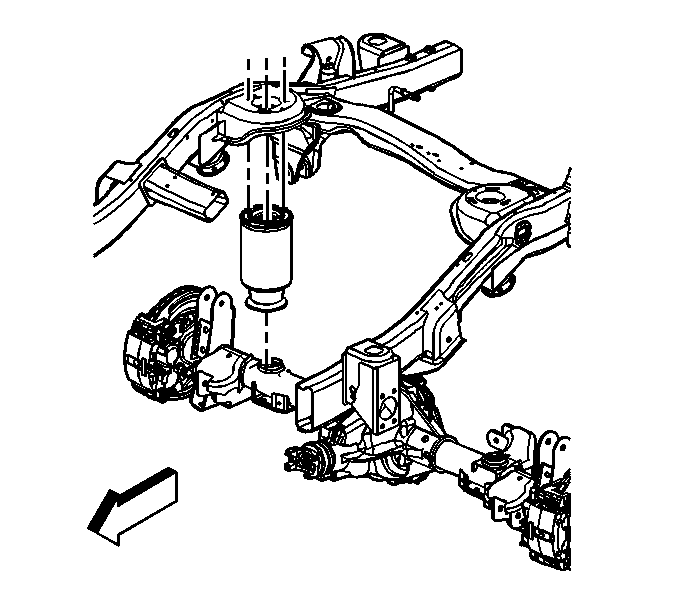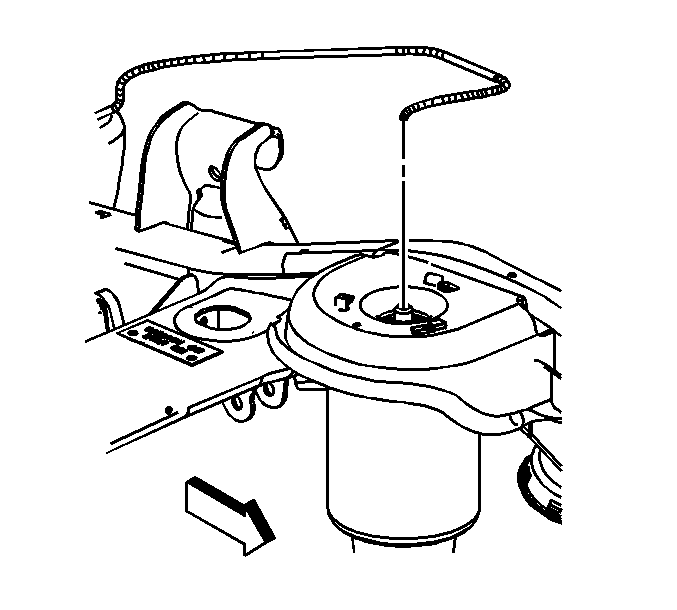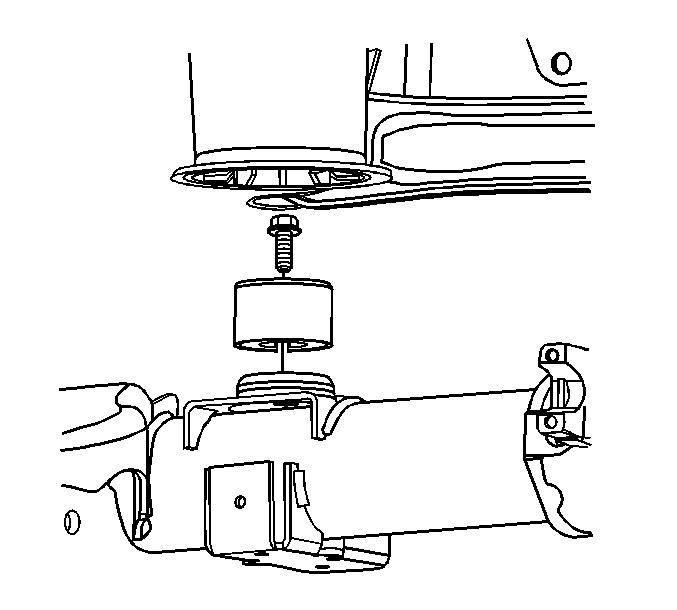Removal Procedure
Caution: Do NOT remove an air supply pipe in an attempt to depressurize the air suspension. Always follow the Air Suspension Depressurization Procedure in Air Suspension. Failure to follow this procedure may cause personal injury or damage to the vehicle.
- Depressurize the air suspension system. Refer to Air Suspension Depressurization .
- Raise and support the vehicle. Refer to Lifting and Jacking the Vehicle .
- Allow the rear axle to hang in the full rebound position.
- Depress the anti-rotation peg in the air spring top plate located in the upper spring seat.
- With the anti-rotation peg depressed, rotate the air spring counterclockwise and remove the air spring from the upper spring seat.
- Remove the air spring from the vehicle.
- Disconnect the air supply line from the air spring. Refer to Air Suspension Air Line Replacement .
- Remove the air spring support from the axle, if necessary.

Important: There is a raised feature on the outer rim of the air spring top plate that denotes the anti-rotation peg position.


Installation Procedure
- Install the air spring support to the axle.
- Install the air supply line to the air spring. Verify that the air supply line is fully seated. Refer to Air Suspension Air Line Replacement .
- Install the air spring to the vehicle.
- Secure the air spring to the frame by aligning the mounting tabs with the keyhole slots in the upper spring seat.
- Apply upward pressure to the air spring and rotate clockwise until the anti-rotation peg snaps into place.
- Pressurize the air springs. Refer to Air Suspension Pressurization .
- Lower the vehicle completely.
- Start the vehicle and run for approximately 2 minutes to verify that the air suspension system is functioning properly.
- Verify the D-height. Refer to Trim Height Specifications .
Notice: Refer to Fastener Notice in the Preface section.

Tighten
Tighten the bolt to 22 N·m (16 lb ft).


Important: If the rear axle was allowed to hang unsupported, lower the vehicle far enough to allow the air spring to be manually engaged to the support on the axle tube with minimal distortion of the air spring bladder. Ensure that the air spring is fully engaged to the axle support.
